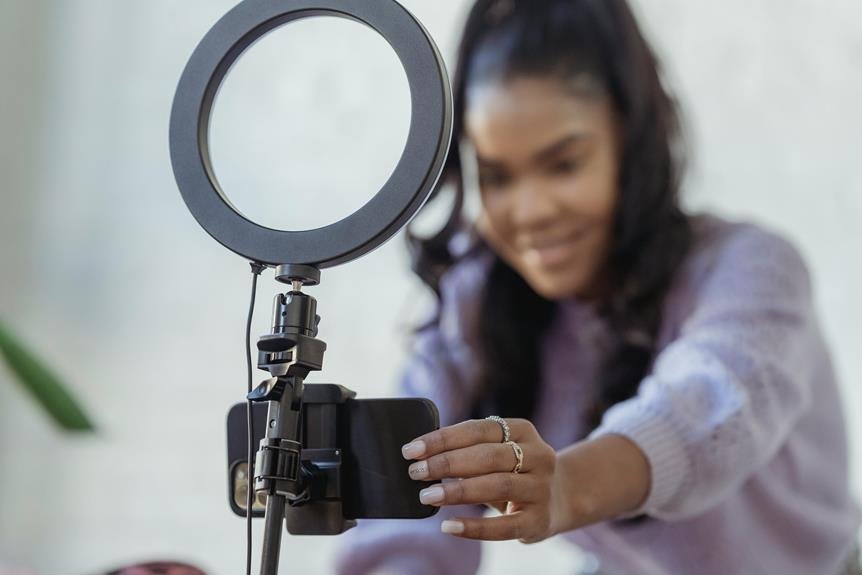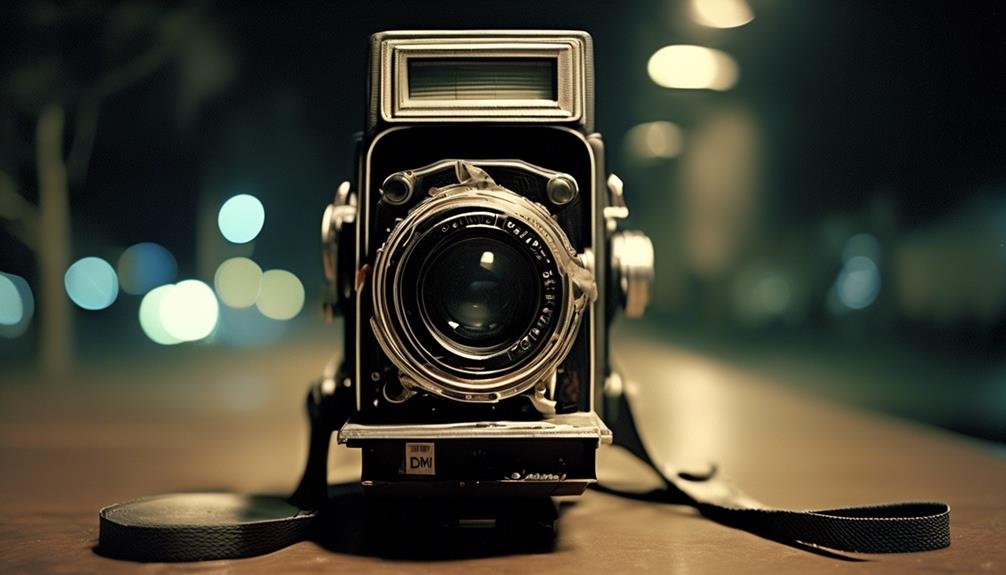
When it comes to capturing cinematic DSLM footage, finding the optimal video settings is like fine-tuning a musical instrument to produce the perfect melody. From frame rate options to lens selection and aperture settings, each element plays a crucial role in achieving the desired visual aesthetic. Understanding the intricacies of shutter speed and motion blur, ISO and low-light performance, as well as picture profiles and color grading, can significantly elevate the quality of your footage. These settings hold the key to unlocking the full potential of your DSLM camera, and mastering them opens up a world of creative possibilities.
Frame Rate Options
When shooting cinematic DSLM footage, it's crucial to consider the frame rate options to achieve the desired visual effect and motion portrayal. The frame rate plays a crucial role in capturing slow motion and action scenes effectively. For slow-motion shots, a higher frame rate, such as 60fps or 120fps, should be selected. This allows for smooth, detailed slow-motion playback, adding drama and impact to the footage. Action scenes, in particular, benefit from higher frame rates as they can capture fast movements with greater clarity and detail.
Choosing the right frame rate is essential for achieving the desired cinematic effect. Higher frame rates provide the flexibility to slow down footage during editing without sacrificing quality, allowing for stunning slow-motion sequences. Additionally, they are ideal for capturing fast-paced action scenes with precision and sharpness. Understanding the impact of frame rates on footage is crucial for cinematographers seeking to push the boundaries of visual storytelling and innovation. Therefore, carefully selecting the appropriate frame rate is vital for achieving the desired cinematic look and bringing creativity to life.
Shutter Speed and Motion Blur
Shifting our focus to the crucial interplay between shutter speed and motion blur, we can optimize our cinematic DSLM footage to convey compelling visual narratives with precision and artistry. The shutter speed of a camera determines the amount of time the sensor is exposed to light, directly impacting both exposure and sharpness. When capturing fast-moving subjects, a faster shutter speed minimizes motion blur, resulting in sharper frames. Conversely, a slower shutter speed introduces intentional motion blur, which can be creatively used to convey a sense of movement or to soften the transitions between frames. For instance, when filming a subject in motion, such as a flowing river or a moving vehicle, a slower shutter speed can produce visually striking creative effects and panning. It is essential to strike a balance between the desired creative outcome and the technical requirements of the scene. Understanding the relationship between shutter speed and motion blur empowers filmmakers to make deliberate choices that enhance the visual impact of their DSLM footage.
ISO and Low-Light Performance

Exploring the intricate relationship between ISO and low-light performance in cinematic DSLM footage, we delve into the technical nuances that optimize image quality and exposure in challenging lighting conditions. When it comes to low light techniques, understanding ISO sensitivity is crucial for capturing high-quality footage in dimly lit environments. Here are some key considerations for maximizing ISO and low-light performance:
- Utilize a wide aperture to allow more light to reach the sensor, reducing the need for excessively high ISO settings.
- Experiment with noise reduction algorithms to mitigate the grainy texture often associated with elevated ISO levels.
- Consider using prime lenses with larger apertures to enhance light-gathering capabilities and minimize reliance on high ISO settings.
- Implement supplemental lighting solutions, such as LED panels or portable softboxes, to augment available light and reduce the necessity for extreme ISO sensitivity.
- Familiarize yourself with the native ISO range of your camera and explore its capabilities in low-light scenarios to optimize image quality without compromising exposure.
Picture Profiles and Color Grading
As we fine-tune our understanding of ISO and low-light performance, our focus now shifts to the critical role of picture profiles and color grading in optimizing the visual aesthetics of cinematic DSLM footage. Picture profiles, also known as picture styles or creative styles, are pre-set configurations that control the camera's image processing parameters such as contrast, saturation, sharpness, and color tone. These profiles have a significant impact on the final look of the footage and provide a foundation for the color grading process.
| Picture Profile | Description |
|---|---|
| Standard | Balanced contrast and saturation for a natural look |
| Neutral | Low contrast and saturation, ideal for post-processing |
| Cinelike D | Enhanced dynamic range and softer highlights |
| Vivid | High saturation and contrast for vibrant colors |
Color grading, the process of enhancing and altering the color of the footage, is where the visual style truly comes to life. It allows for precise adjustments to white balance and skin tones, as well as manipulation of dynamic range and highlights to achieve the desired cinematic look. Understanding how to leverage picture profiles and color grading techniques is essential for elevating the visual impact of DSLM footage.
Lens Selection and Aperture Settings

Lens selection and aperture settings play a crucial role in determining the depth of field and overall visual impact of DSLM footage. When choosing a lens for cinematic DSLM footage, it's important to consider the focal length, maximum aperture, and image stabilization capabilities. Additionally, the aperture setting directly affects the amount of light entering the lens and the resulting depth of field. Here are some key points to consider when focusing on lens selection and aperture settings:
- Prime vs. Zoom Lenses: Prime lenses offer a fixed focal length and wider apertures, providing excellent bokeh and low-light performance. Zoom lenses offer versatility but may have narrower apertures.
- Aperture Size: A wider aperture (e.g., f/1.8) produces a shallower depth of field, ideal for isolating subjects, while a narrower aperture (e.g., f/8) increases the depth of field, keeping more elements in focus.
- Bokeh Effect: A wider aperture creates a pleasing bokeh effect, where out-of-focus areas appear smooth and creamy, adding a cinematic quality to the footage.
- Lens Stabilization: Optical or in-body stabilization can help reduce the impact of camera shake, especially when shooting with a narrow aperture in low-light conditions.
- Lens Compatibility: Ensure the lens is compatible with your DSLM camera body to maximize functionality.
Frequently Asked Questions
How Can I Ensure My Audio Quality Matches the Cinematic Quality of My DSLM Footage?
To ensure audio quality matches cinematic DSLM footage, we synchronize audio with video, use high-quality sound equipment, and employ professional recording techniques. This ensures a seamless blend of stunning visuals and exceptional audio quality.
What Are Some Common Mistakes to Avoid When Shooting Cinematic DSLM Footage?
When shooting cinematic DSLM footage, common mistakes to avoid include improper exposure control, neglecting color grading, and choosing the wrong lens. These factors greatly impact the overall quality and visual appeal of the footage.
How Can I Effectively Use Natural Light to Enhance My Cinematic DSLM Footage?
We effectively use natural light to enhance cinematic DSLM footage by using reflectors, diffusers, and understanding the light's direction and quality. This, combined with color grading and post-processing techniques, elevates the visual impact.
What Are Some Creative Techniques for Achieving Unique and Visually Appealing Shots With a DSLM Camera?
Creating unique composition and utilizing innovative lighting techniques with a DSLM camera can elevate visual storytelling. Experimenting with unconventional angles and harnessing natural light creatively can yield visually stunning and distinct shots.
How Can I Ensure Smooth and Stable Camera Movements When Shooting Cinematic DSLM Footage?
To ensure smooth panning and stable tracking, we adjust our camera settings for optimal performance. We also use stabilizing equipment and practice precise movements. By carefully planning our shots and utilizing advanced techniques, we achieve cinematic excellence.
